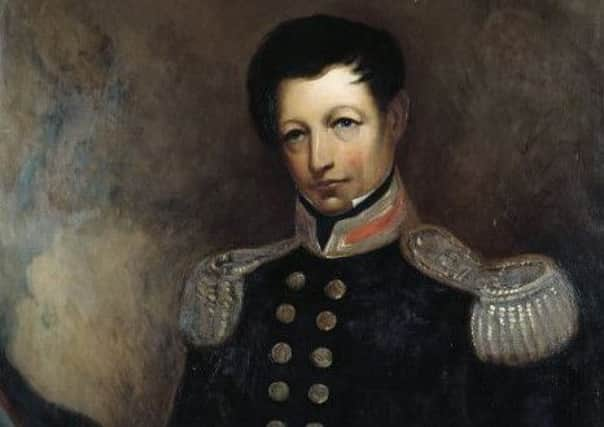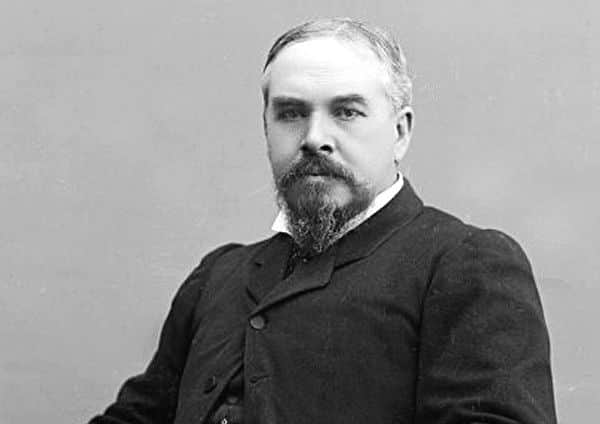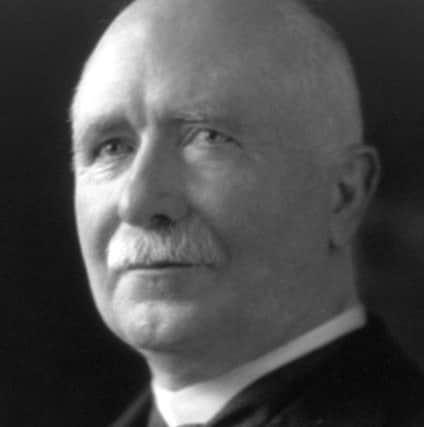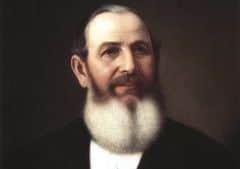Folk from Ireland, north and south, who made a substantial mark on Kiwi history


The Treaty of Waitangi, signed in 1840, established British sovereignty in New Zealand, granted the indigenous Māori people “full, exclusive and undisturbed possession of their lands” and guaranteed them the same rights as British subjects.
The historic document’s co-author, along with James Busby from Scotland, was Captain William Hobson, born on September 26, 1793 in Waterford.
Advertisement
Hide AdAdvertisement
Hide AdThen I was informed that missionary, linguist, teacher and Māori campaigner Robert Maunsell, born near Limerick in 1810, was also instrumental in framing the Treaty of Waitangi.


But just over a month after mentioning Captain Hobson here, and with other stories about famous Irish-New Zealanders arriving in my mailbox, 50 people died and dozens more were injured in the tragic attacks on two mosques in Christchurch on March 15.
The terrible tragedy put the topic shared heritage on hold but, returning to it once again, just a few more famous local folk in Kiwi history are getting an airing here today.
People from the Emerald Isle, north and south, have made an immense impact on New Zealand’s history, in the church, in the police, in sport, industry and the army, but we’ll begin today with politics, where some of their paths crossed.
Advertisement
Hide AdAdvertisement
Hide AdGlenavy’s Ballance House farm museum in Co Antrim, run by The Ulster New Zealand Trust, is the restored birthplace of John Ballance, Prime Minister of New Zealand from 1891 to 1893.


Born on March 27, 1839, John was educated at the local national school and in Belfast.
He embarked on an ironmongery apprenticeship in Belfast and later in Birmingham where he became interested in politics.
While studying history, politics and biography in evening classes he met Miss Fanny Taylor, the daughter of a licensed victualler, and they were married in Aston on June 17, 1863.
Advertisement
Hide AdAdvertisement
Hide AdPartly due to his wife’s ill health they emigrated to New Zealand, arriving in Wellington on August 11, 1866.


He entered New Zealand’s parliament in 1875 and amassed a remarkable tally of political accolades.
As well as becoming prime minister and the main owner of a popular newspaper, he was the first leader of the opposition and in government he held office as Minister of Lands and Immigration, Minister of Defence and Minister of Native Affairs.
When he led the Liberals to power in 1891 he was called ‘The Rainmaker’ by voters who were relieved to see the return of prosperity.
Advertisement
Hide AdAdvertisement
Hide AdHe was also vice-president of the Women’s Progressive Society, was awarded one of New Zealand’s top military medals and supported female enfranchisement in the House of Representatives in 1892.
John Balance died aged 54 on April 27, 1893, in Wellington, New Zealand.
James Brendan Bolger, the son of Irish immigrants, was also Prime Minister of New Zealand from 1990 to 1997, and William (Bill) Ferguson Massey, born in Limavady on March 26, 1856, served as the country’s Prime Minister from 1912 to 1925.
Massey emigrated in 1870, joining the rest of his family who had gone to New Zealand eight years previously.
Advertisement
Hide AdAdvertisement
Hide AdHe’d remained at home until he was 14 to finish his schooling.
William started farming at Mangere, south of Auckland, in 1876.
His wife Christina was the daughter of Scottish settlers and they had seven children, two of whom, Walter and John, became members of parliament.
Massey’s outlook was strongly influenced by his Presbyterian faith and membership of the Orange Order.
Advertisement
Hide AdAdvertisement
Hide AdIn the 1890s he rose to prominence in the National Association of New Zealand, formed to oppose Liberal prime minister John Balance!
He entered parliament in 1894 and instigated the conservative Reform Party in 1909.
His principal opponent, Joseph Ward, was a Catholic of Irish descent whose majority was overturned by a narrow vote of no confidence in July 1912.
When the First World War broke out in Europe, Massey cabled the British Government “all we are and all we have is at the disposal of the British government”.
Advertisement
Hide AdAdvertisement
Hide AdHe often visited his country’s troops on the front lines, many in hospital following the battle of the Somme where the New Zealand Division suffered 7,000 casualties including Massey’s youngest son, George, who was seriously wounded.
One of his visits to the front lines included Massey’s first return to his home, and he came back again in 1923.
There’s a statue of him in Limavady and he’s also commemorated by Stormont’s Massey Avenue.
He became increasingly unwell with cancer during 1924 and died in May 1925.
Advertisement
Hide AdAdvertisement
Hide AdFinally today, two Tyrone-men, George Vesey Stewart the pioneer New Zealand settler, farmer, businessman and coloniser who went there in 1873 and thereafter settled thousands of immigrants, mostly from Ulster, and farmer, investor, speculator and philanthropist James Dilworth who emigrated in 1841.
Dilworth, born in 1815 in Donaghmore, settled in New Zealand early in 1841.
There he created a lasting link with his homeland, especially Dungannon Royal School which young James attended from 1826 to 1832.
James became a very successful businessman but his love of education was never far from his thoughts, and when he died in 1894 he left a substantial sum of money (£150,000) to set up a school in Auckland, to accommodate and educate boys from distressed backgrounds.
The Dilworth School opened in 1906 and its strong links with Dungannon Royal continue today.